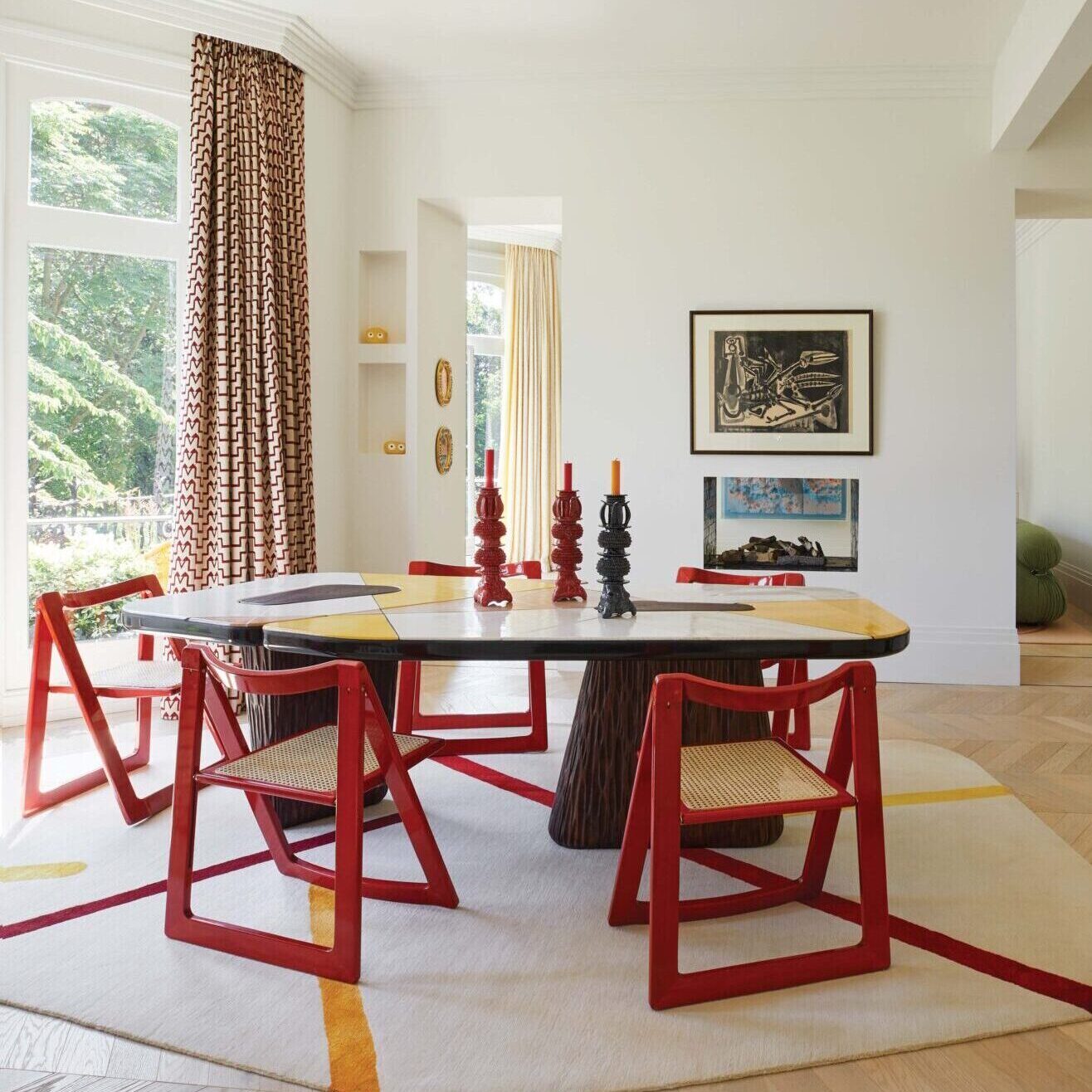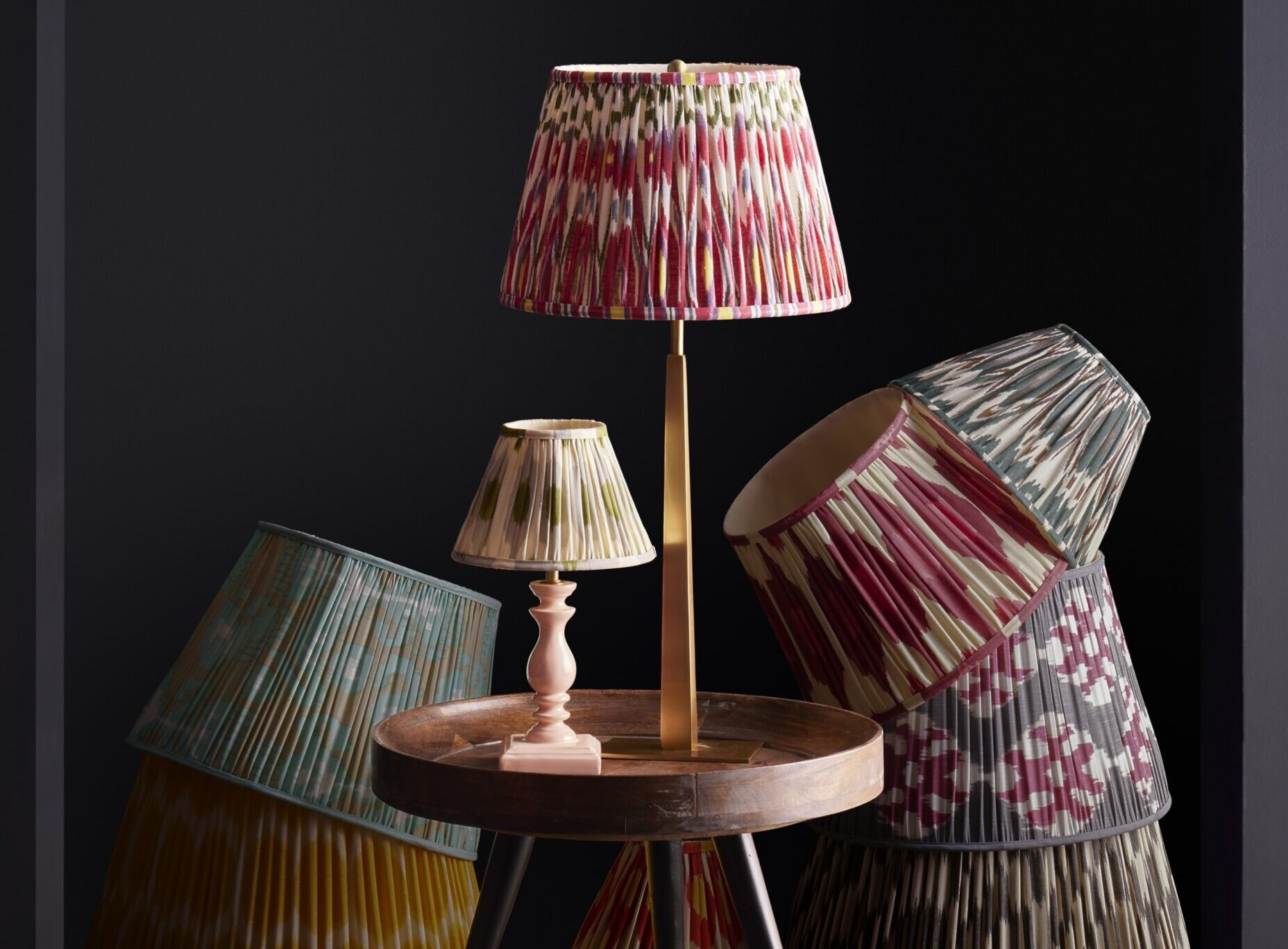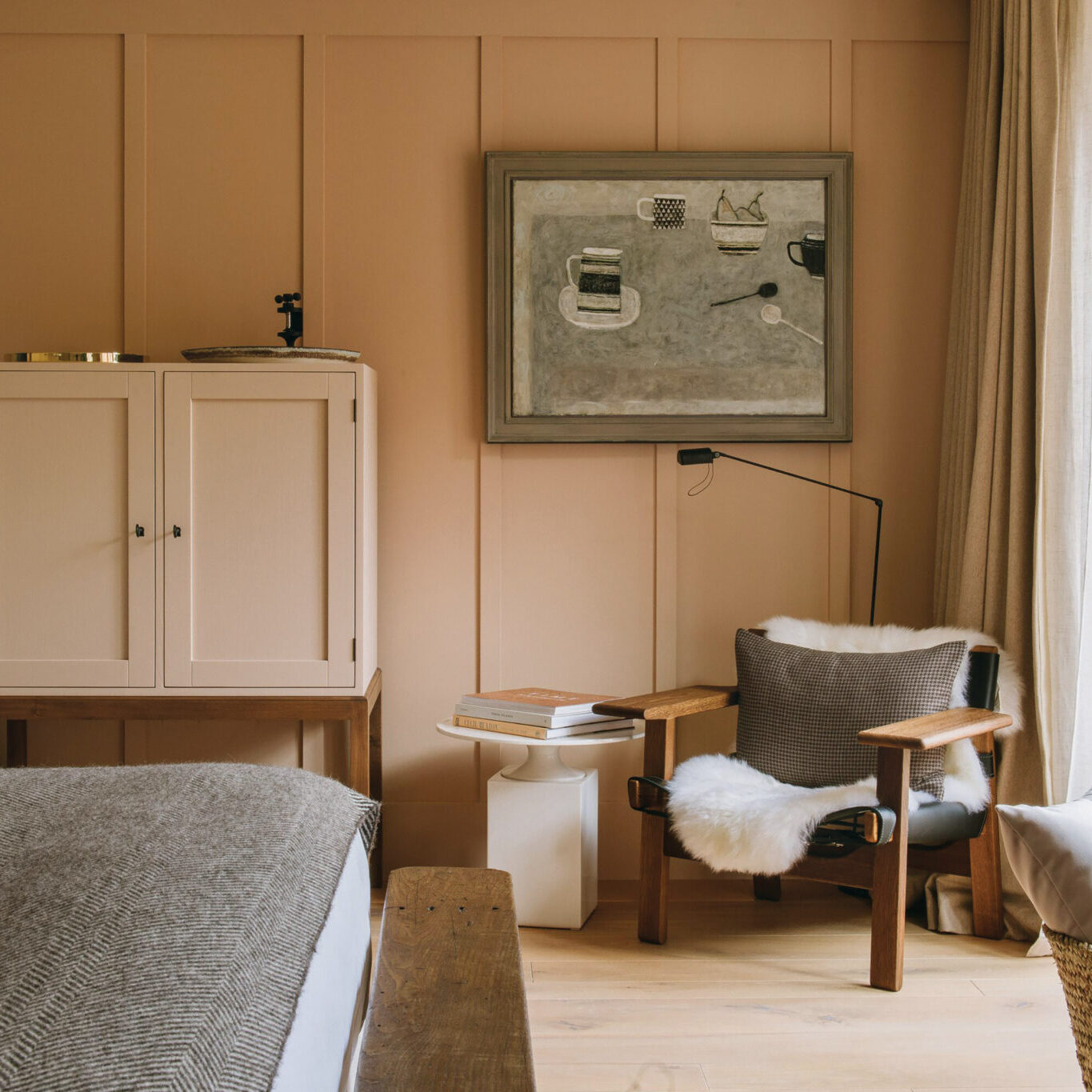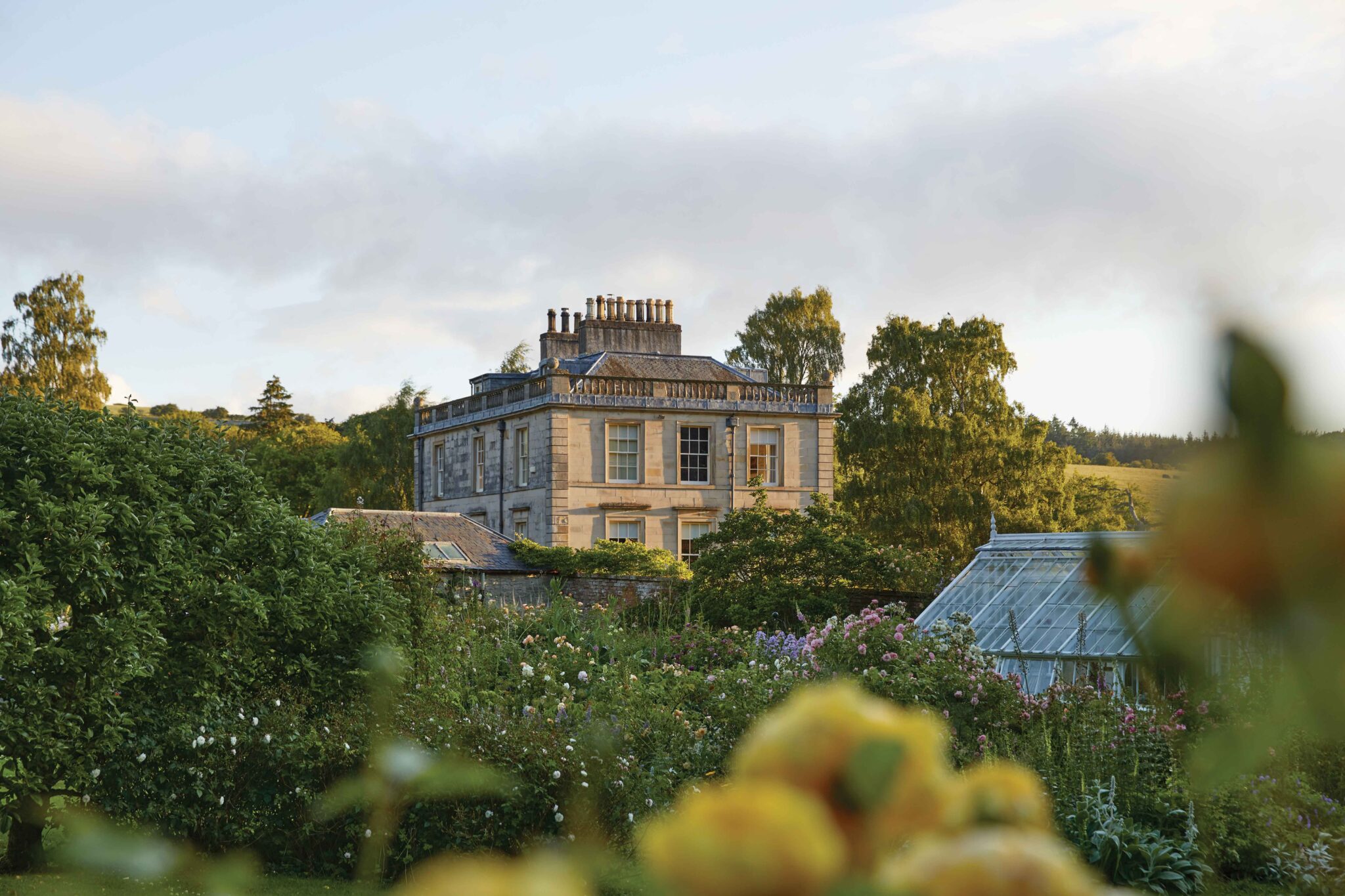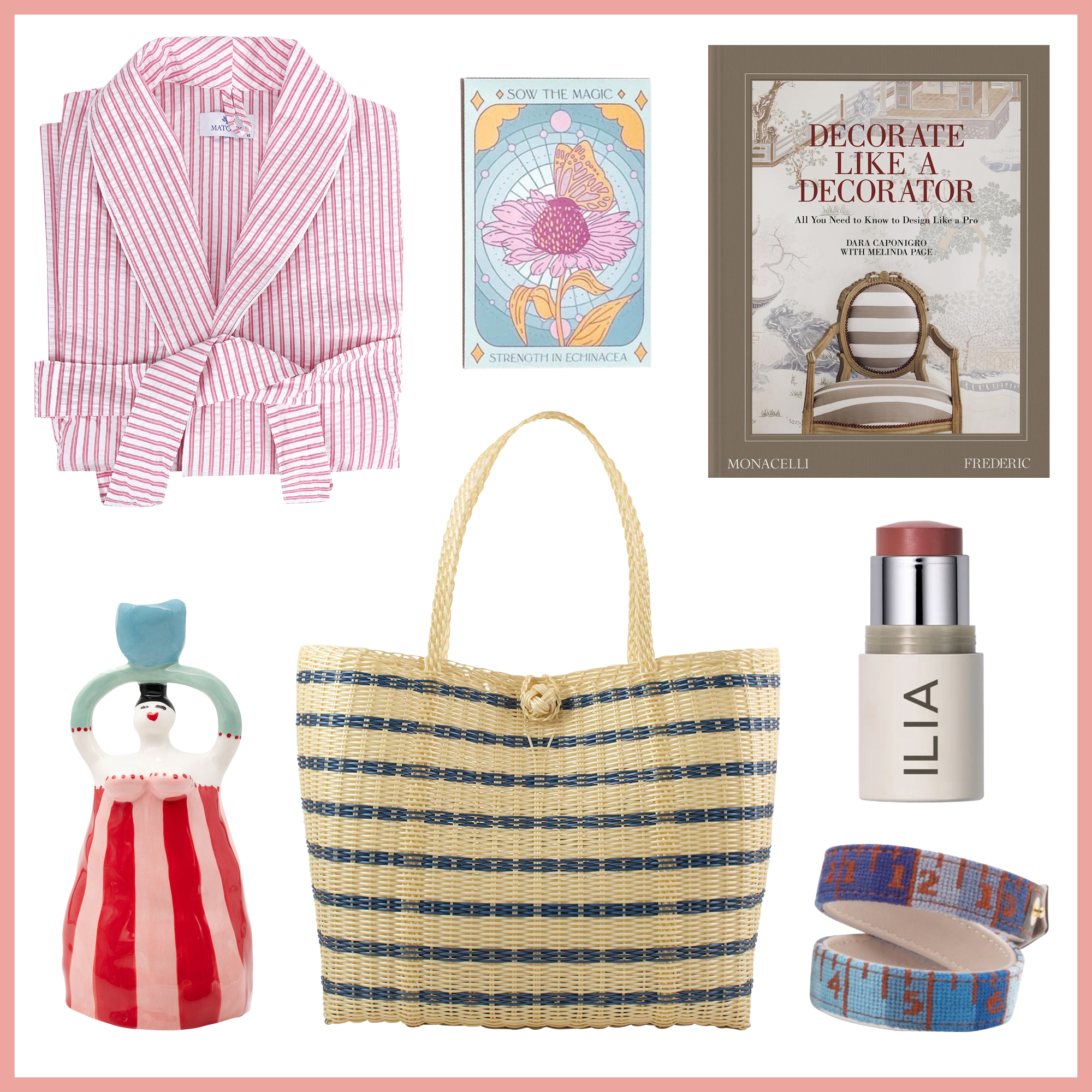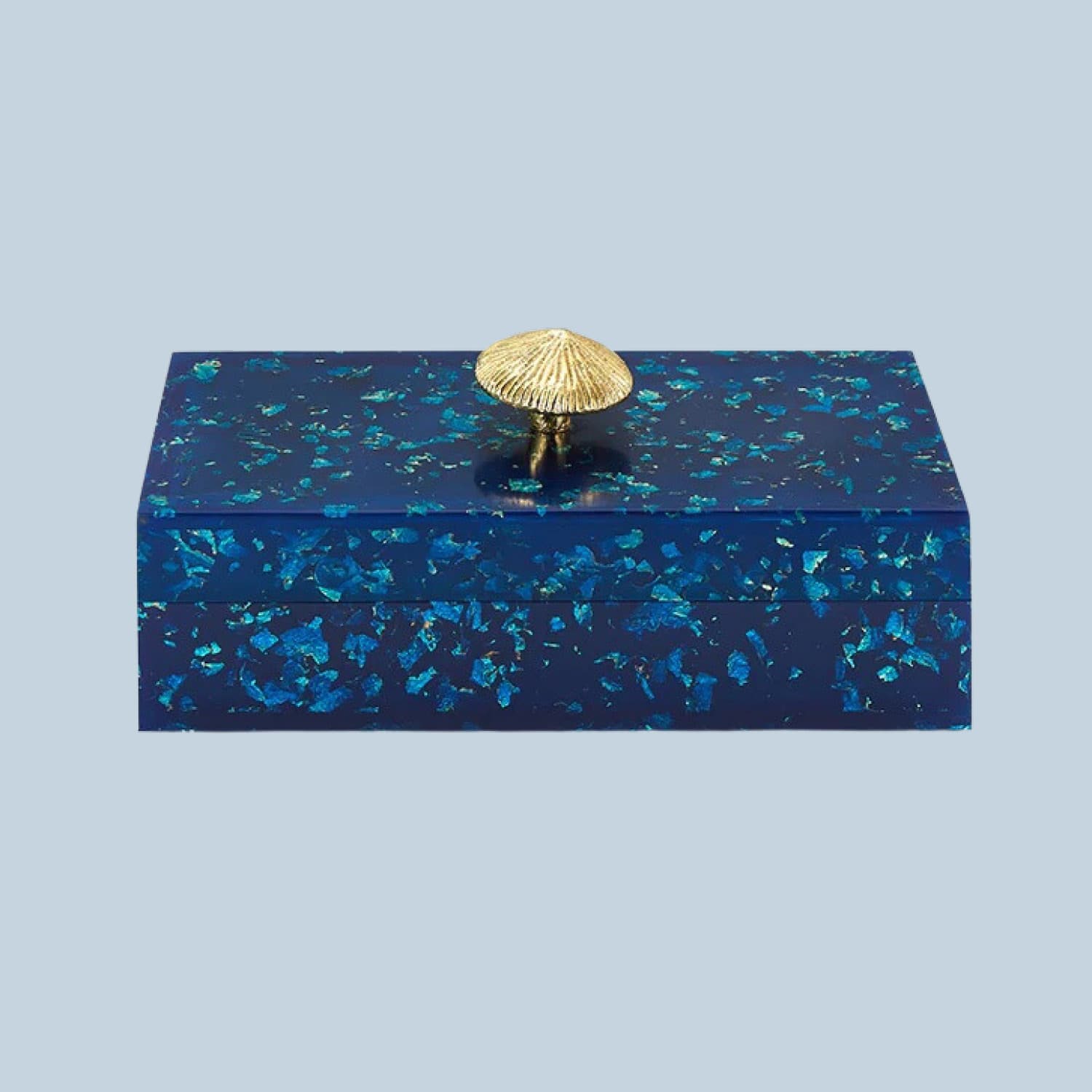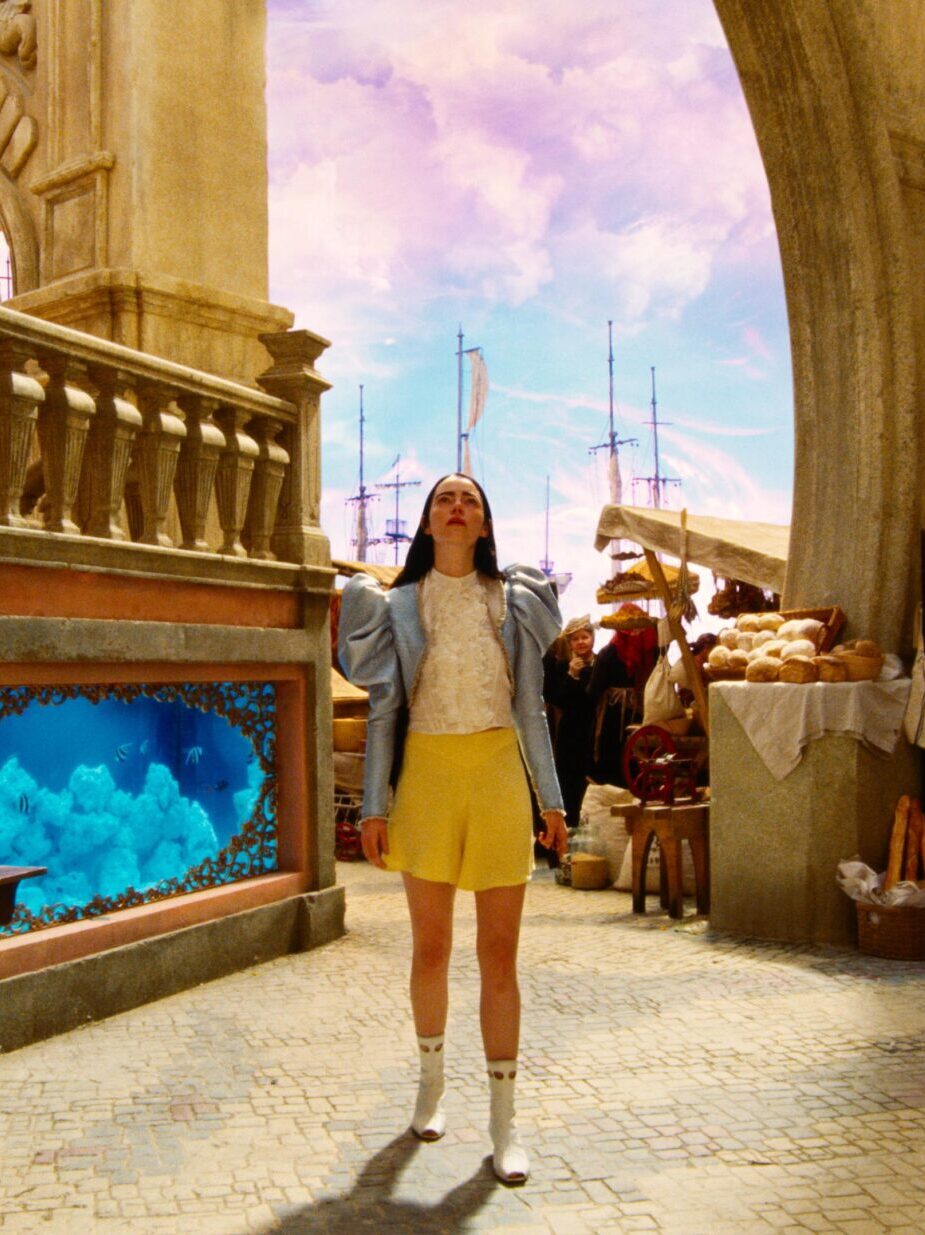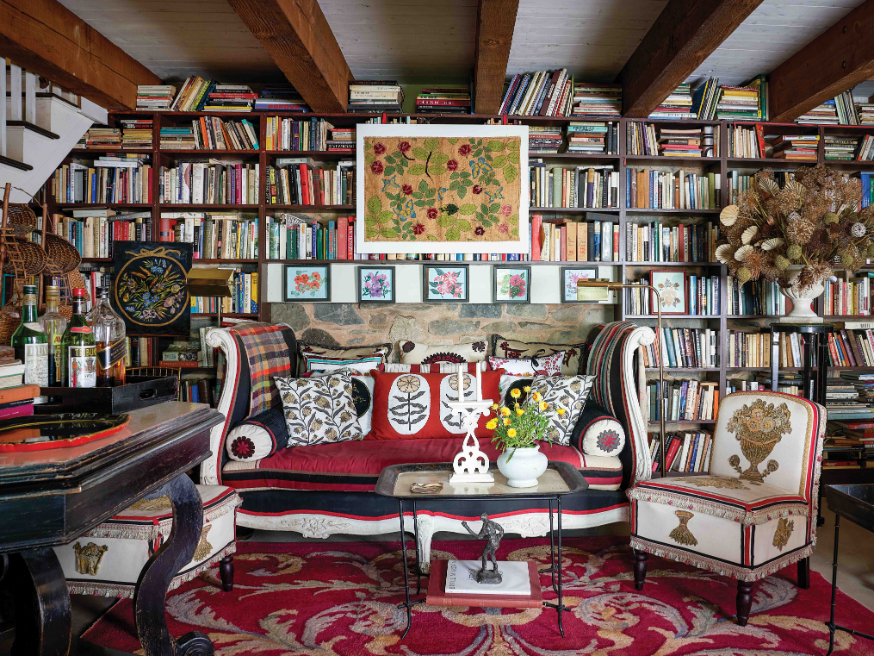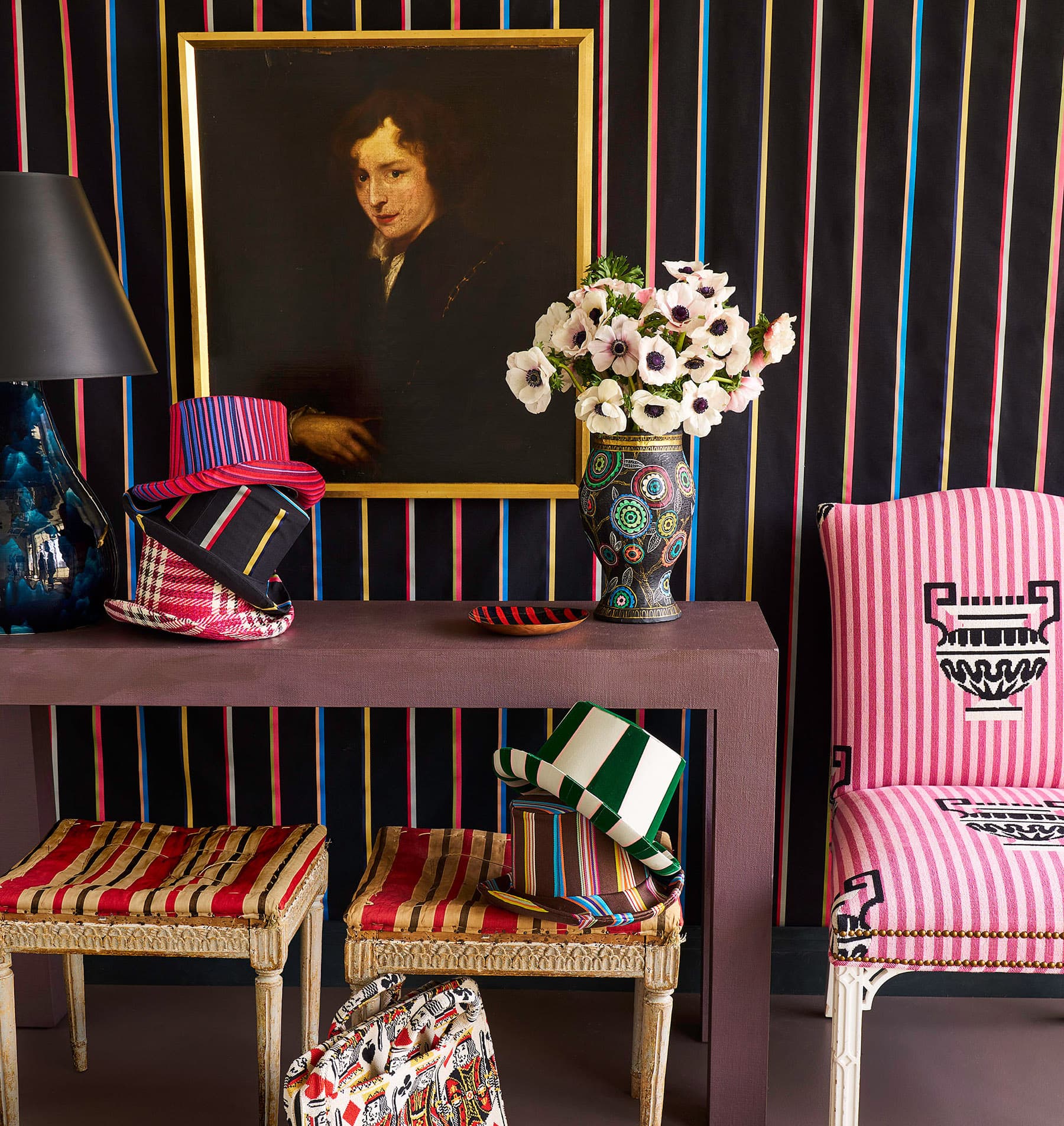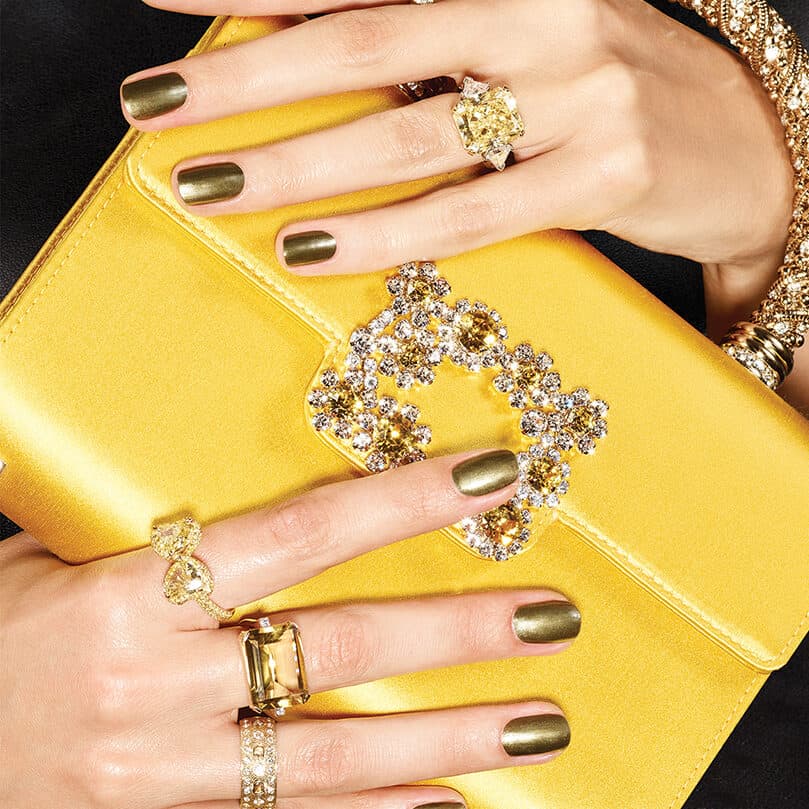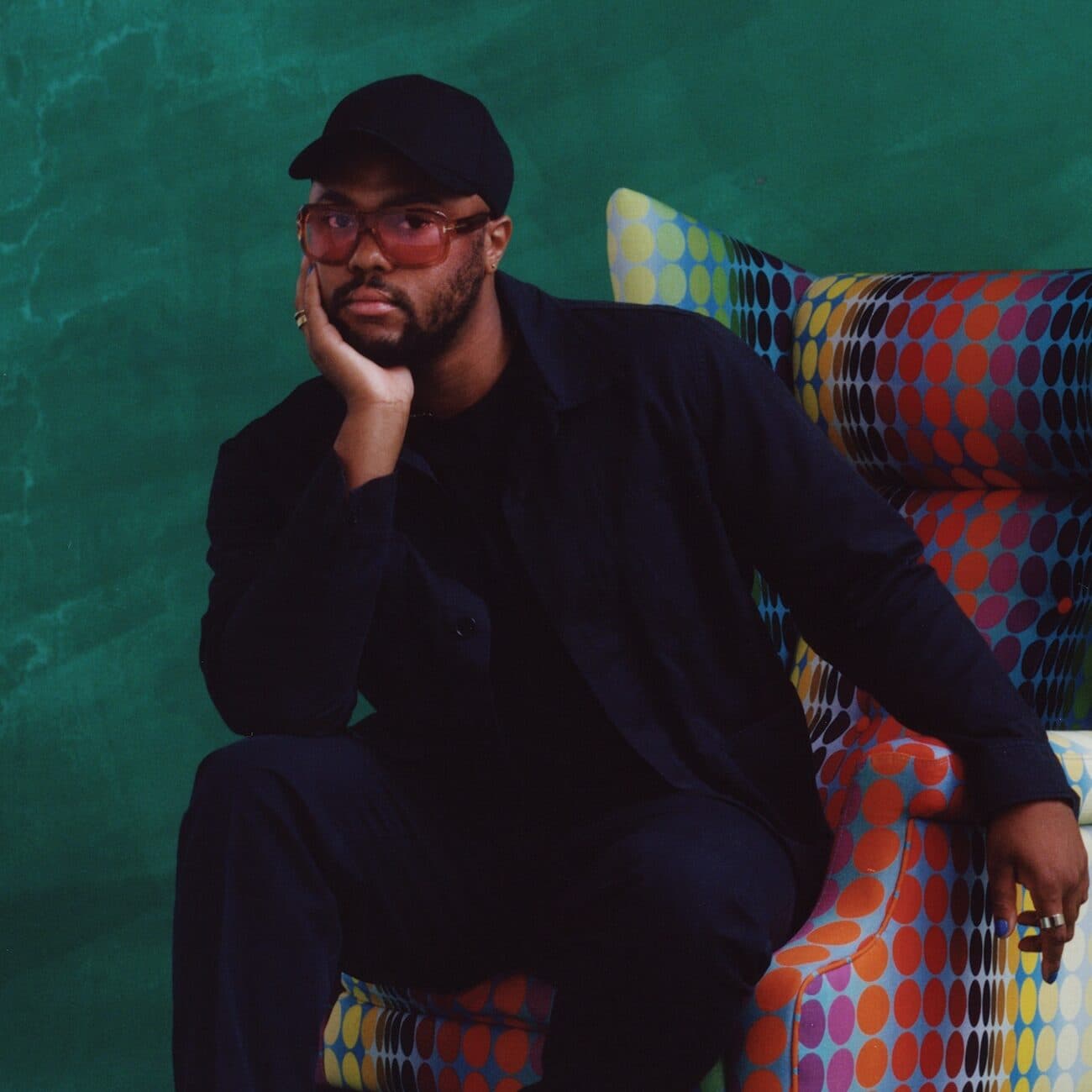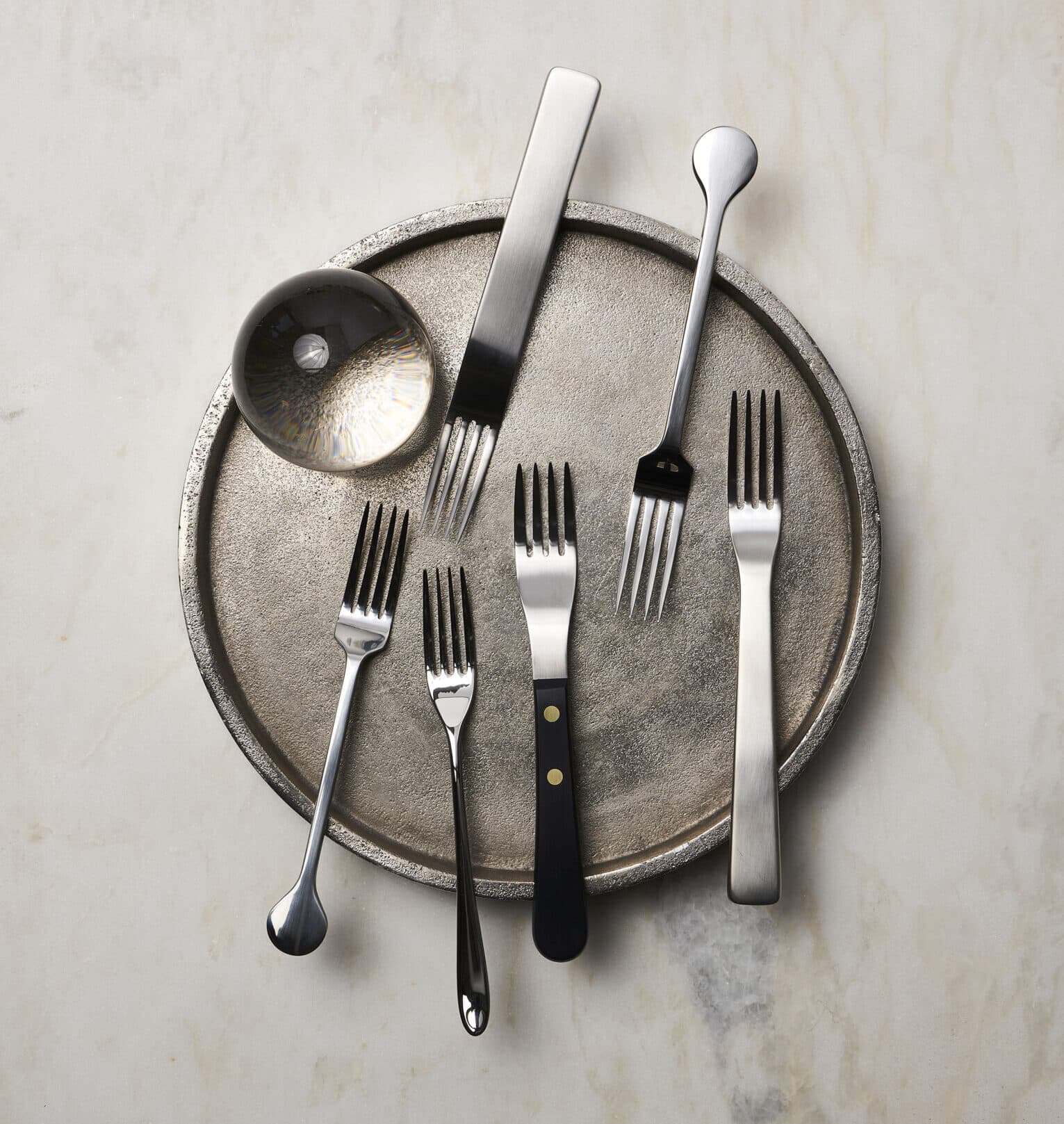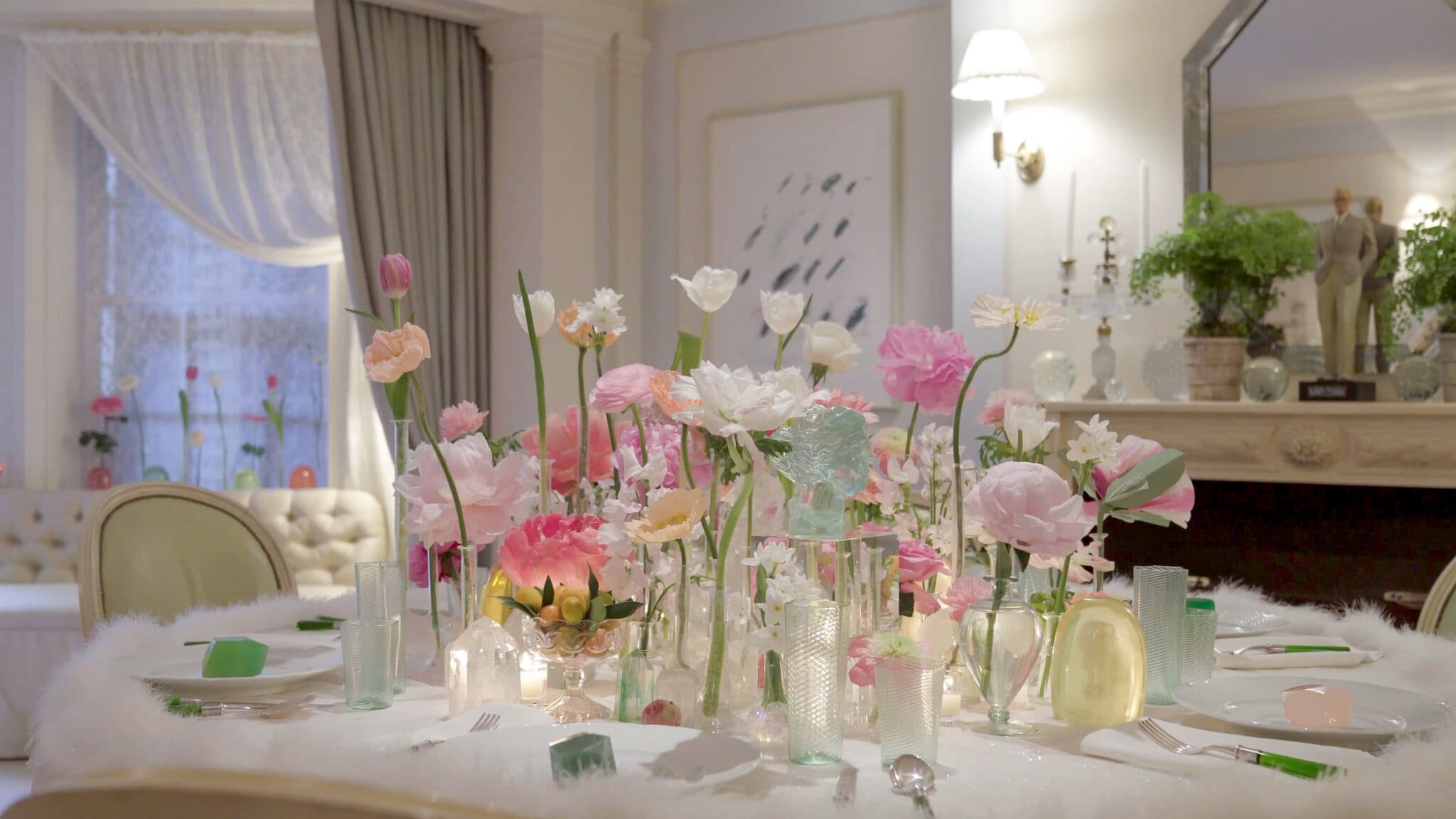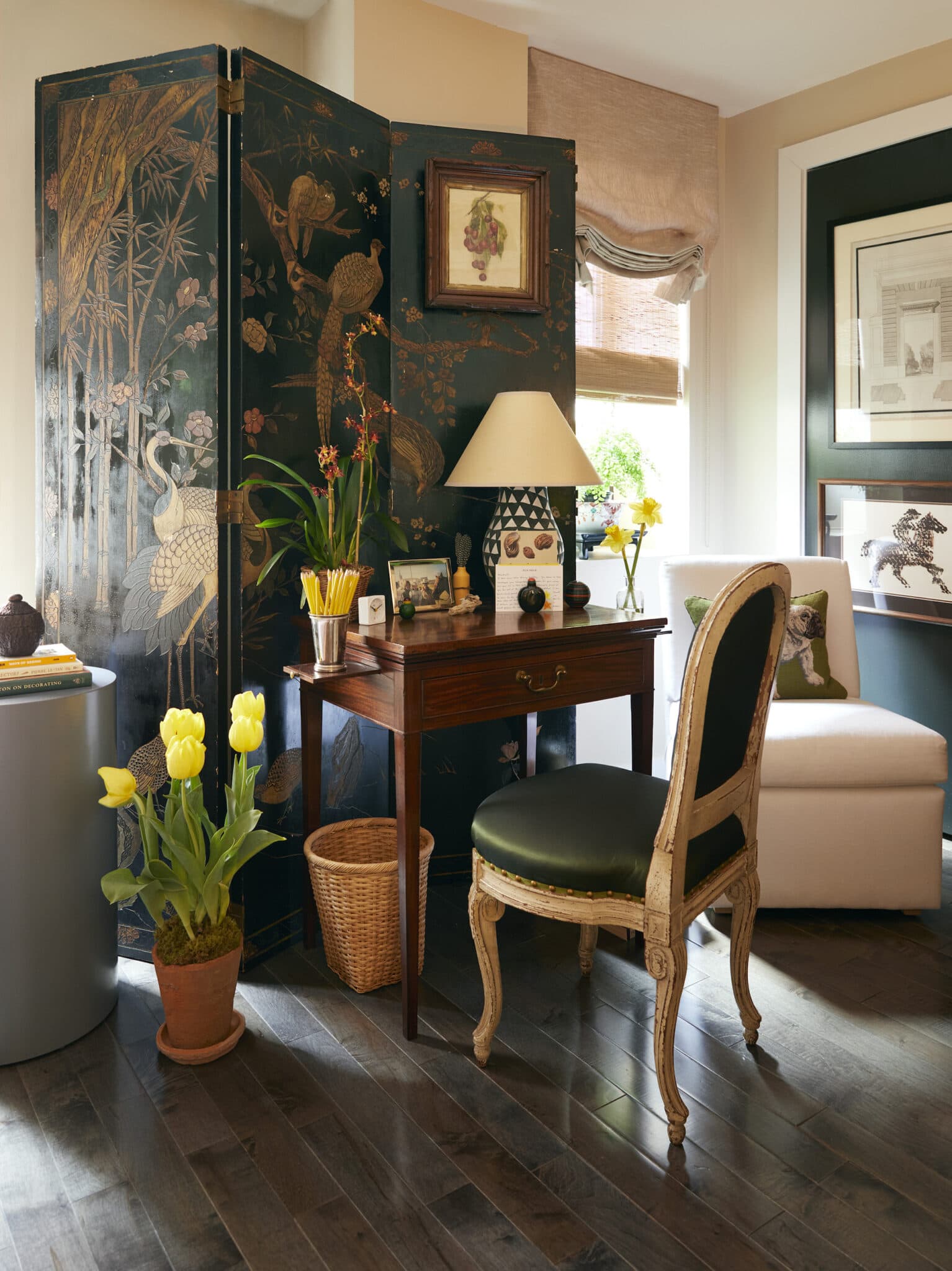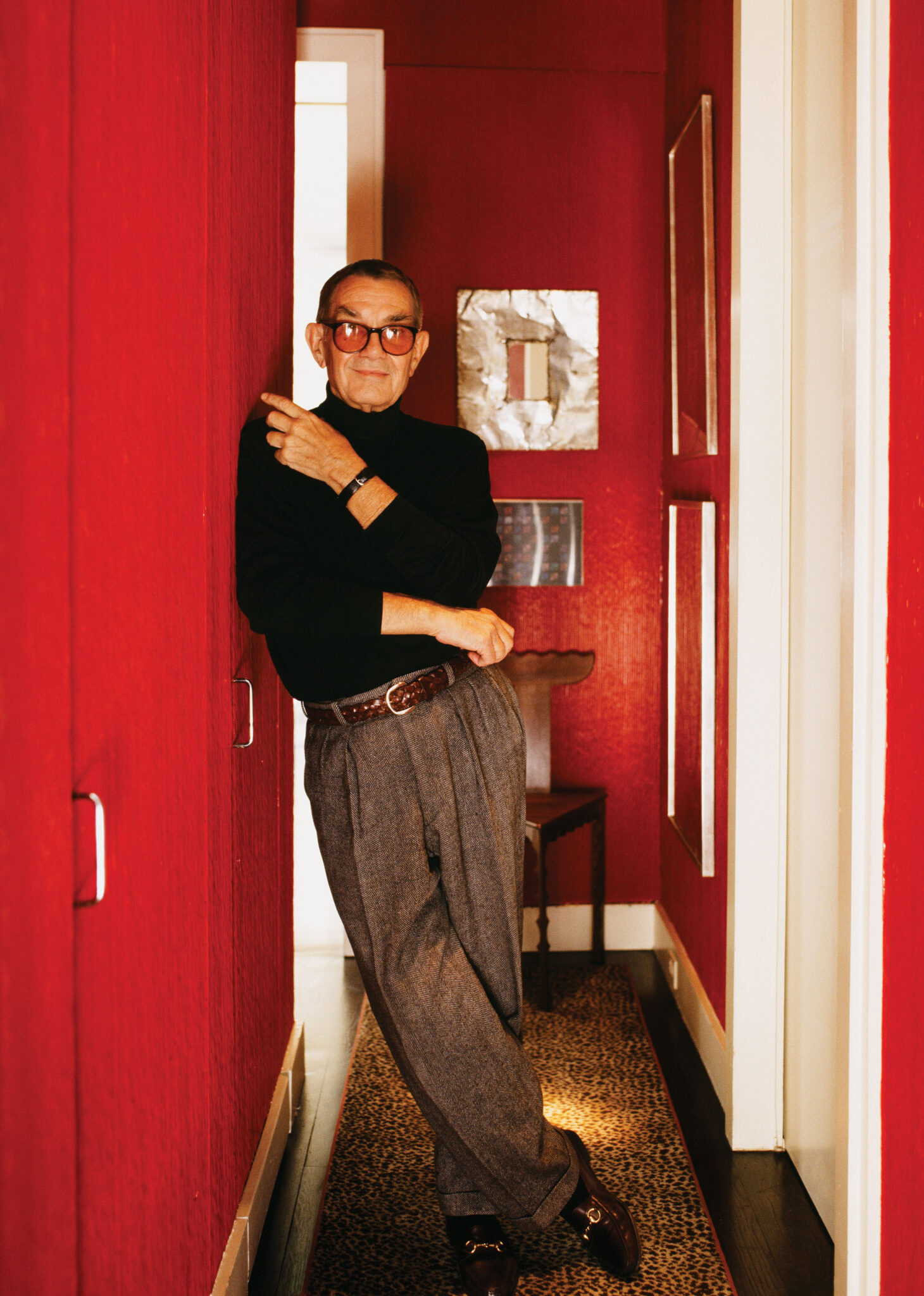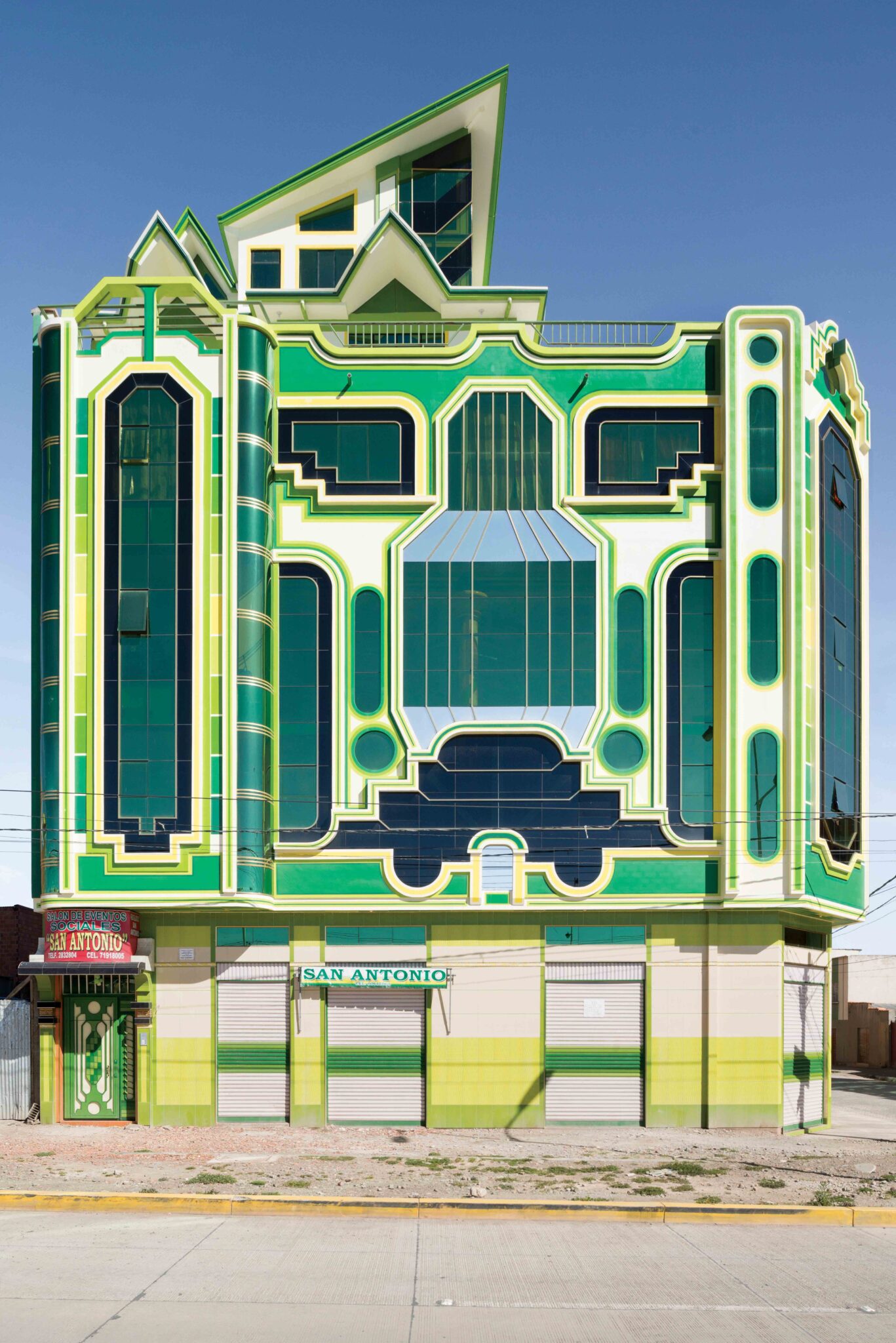In 2018, when Marshall Neve was finishing his B.A. in advertising at the University of Texas in Austin, living in bare-bones housing with a denim slipcovered sofa and a coffee table made from a wooden door, he couldn’t have imagined where he would wind up just five years later: as a design assistant at the celebrated Manhattan interiors firm of Redd Kaihoi, living in a turn-of-the-century apartment in Nolita that he has transformed into an elegantly lush jewel box.
-

Twenty-six-year-old Marshall Neve, a design assistant at the Manhattan interiors firm of Redd Kaihoi, strolls through the Nolita neighborhood where he lives in a turn-of-the century apartment.
Melanie Acevedo -
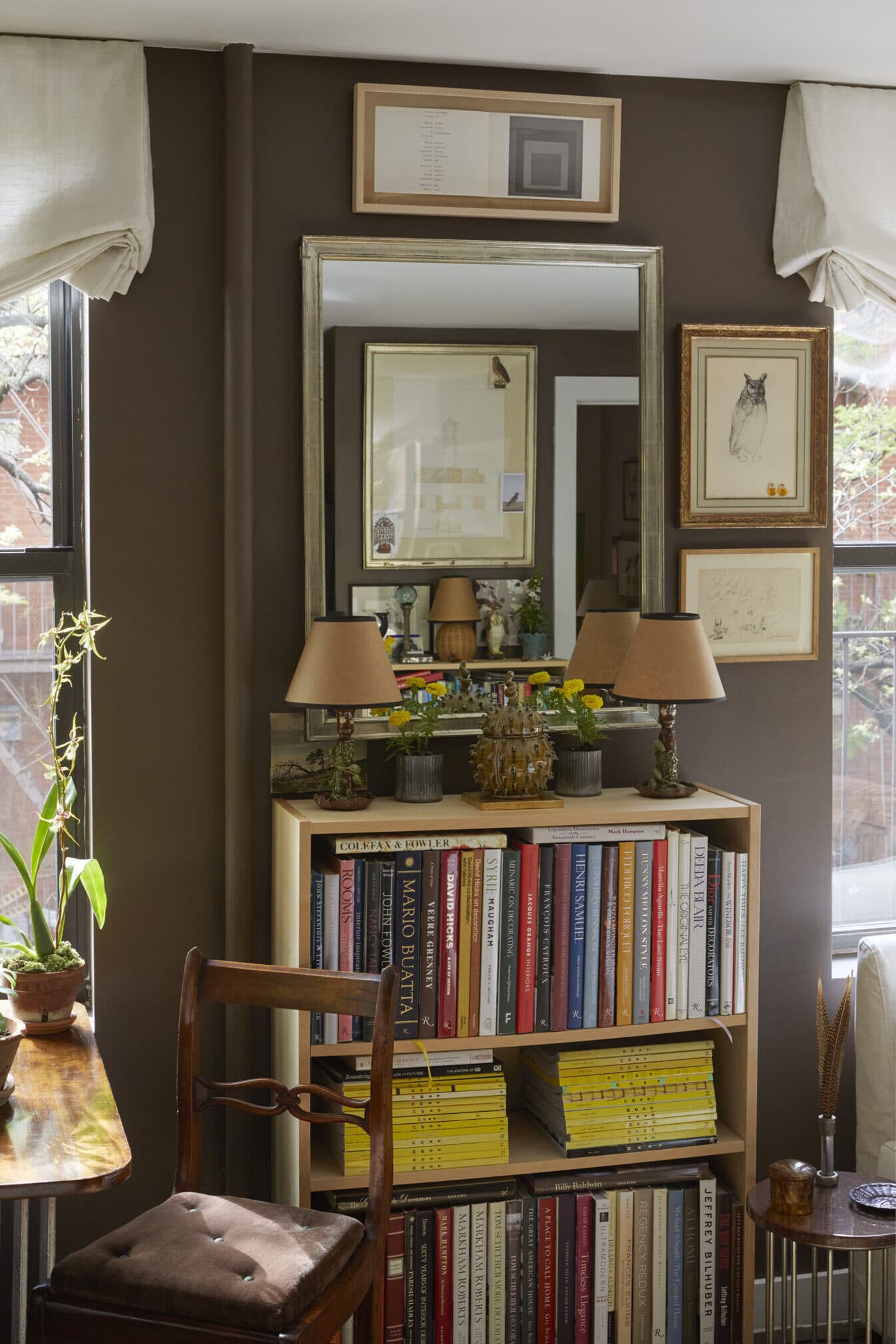
A design library filled with legendary names like François Catroux, Henri Samuel, and Syrie Maugham nods to Neve’s passion for the classics. A pair of majolica candlesticks-turned-lamps provides symmetry.
Melanie Acevedo
After climbing the creaky, narrow stairs up to the fourth floor of the former tenement building on trendy Elizabeth Street, you might expect to find something redolently funky and bohemian behind the door to Neve’s tiny apartment (it’s just 300 square feet). Instead, you’re suddenly transported to a classic, if scaled down, Kensington gentleman’s flat with deep brown walls and crisp white trim, arrayed just so with precious objects, books, art, and carefully placed furnishings. You can imagine this is the sort of modest yet profoundly tasteful bolt hole that Edith Wharton might have meant for The House of Mirth’s Lawrence Selden to occupy, filled with acquired treasures. Sun streams in through open windows that look over the treetops; you can hear a faint sound of teacups clinking from the outdoor cafe on the street below. “In the winter, it’s really intimate and cozy,” Neve says, “and in the summer, the dark walls are like living in a shaded forest.”
-
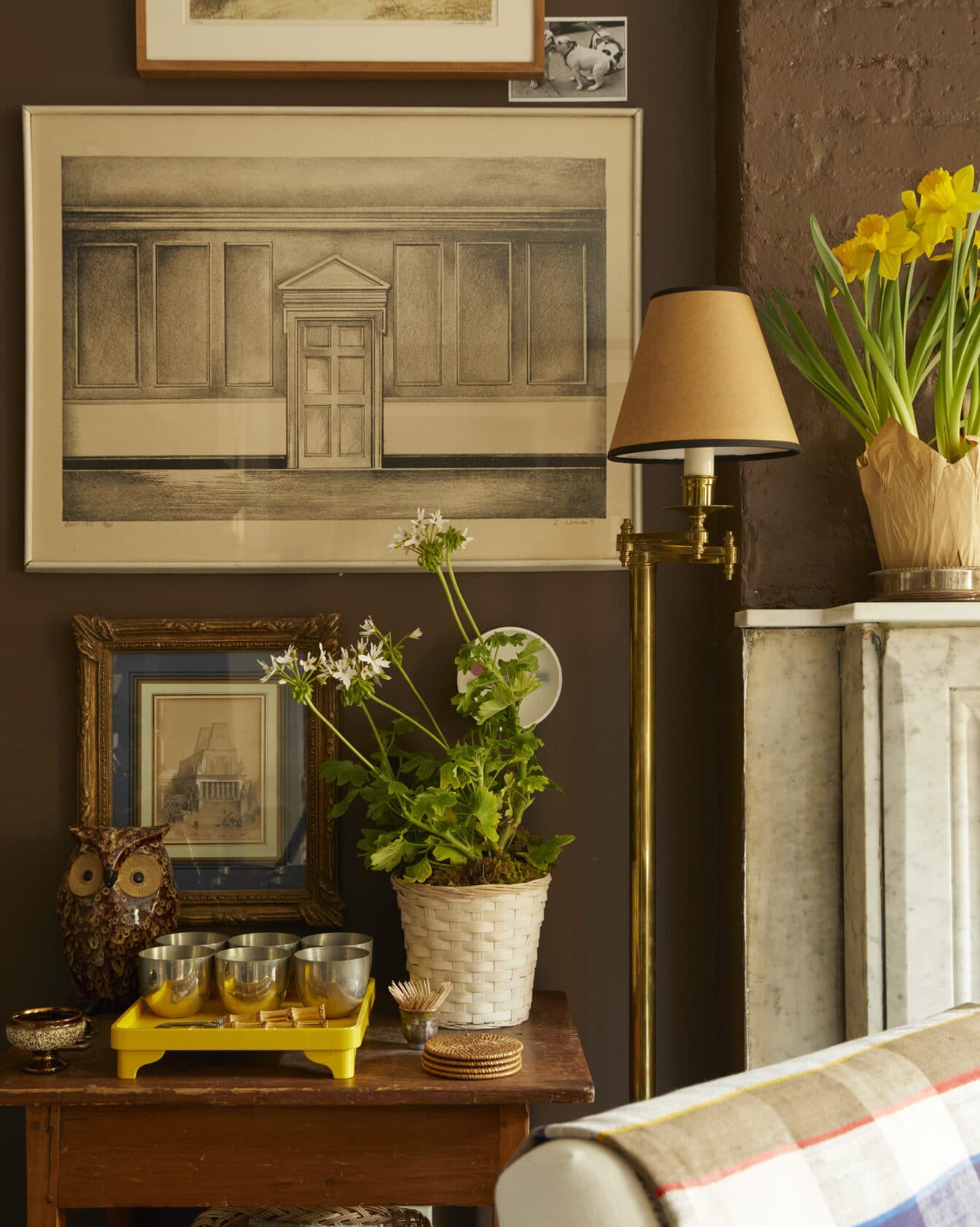
Neve painted the walls of his apartment a rich shade of brown (Middlebury Brown by Benjamin Moore), which manages to make the small living room seem more expansive than it is. It’s also a fitting backdrop for his art collection, which includes numerous architectural studies. (The smaller 19th-century Egyptian study was purchased at auction from John Rosselli’s collection.)
Melanie Acevedo -
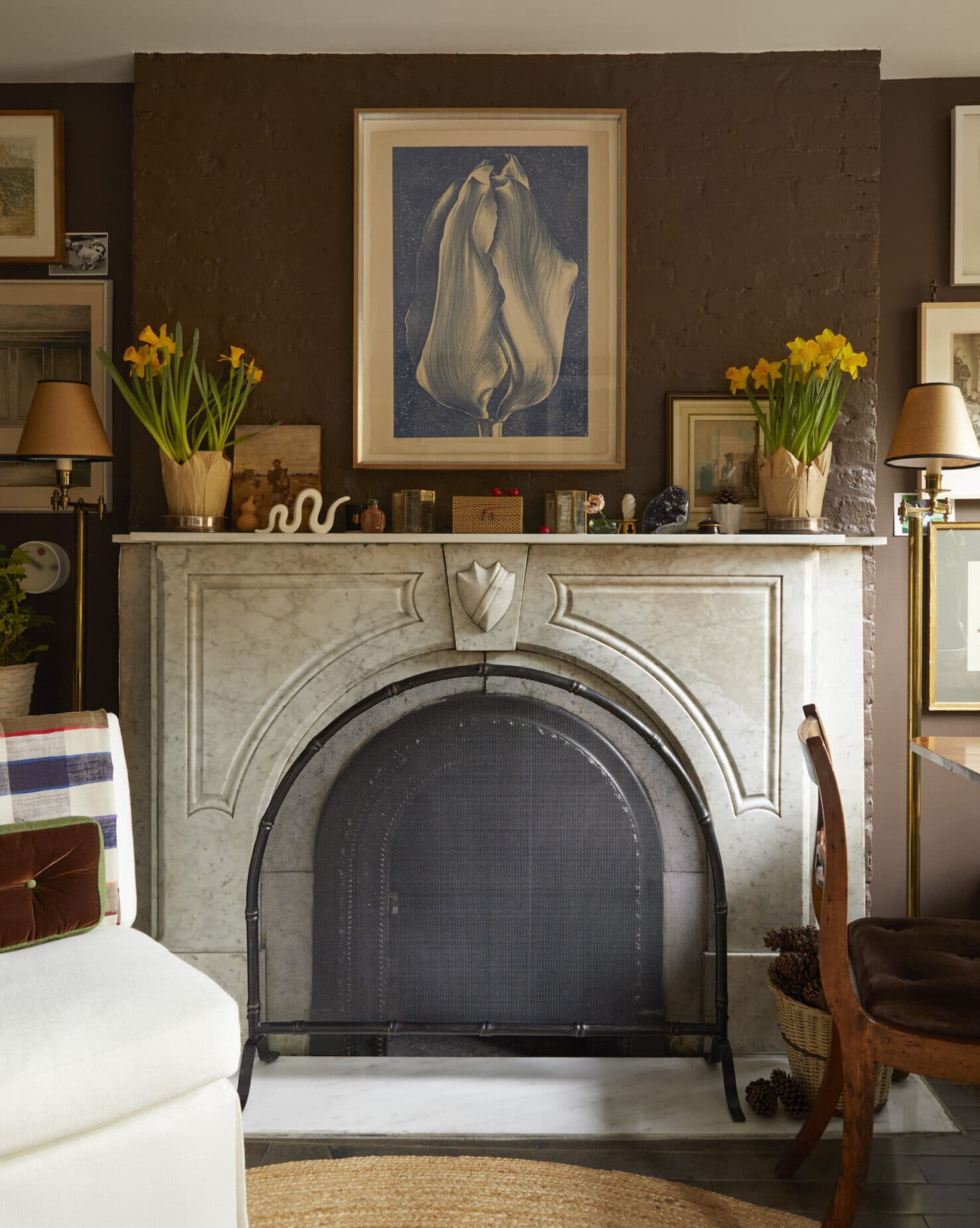
A drawing of a tulip by Lowell Nesbitt hangs above the decorative marble fireplace, flanked by a Billy Baldwin slipper chair and a Regency dining chair
Melanie Acevedo
Somehow, through the magic of proper proportion, well-hung walls, clever furniture arrangement, and strategic use of color and texture, Neve has made the 150-square-foot living room capacious and inviting—a miniature salon-cum-dining room with a kitchen against one wall. Although there is no entryway—the front door opens directly into the main space—he has engineered a gentle flow, creating the feeling of a foyer that leads to small areas carved out for lounging, sipping morning coffee, flipping through art books found at the Strand, and watching the birds. The dark hue makes the space seem larger, and painting the doors the same shade, with brilliant white bits of contrast, allows them to fade into the walls, creating the illusion of an unbroken expanse.
-
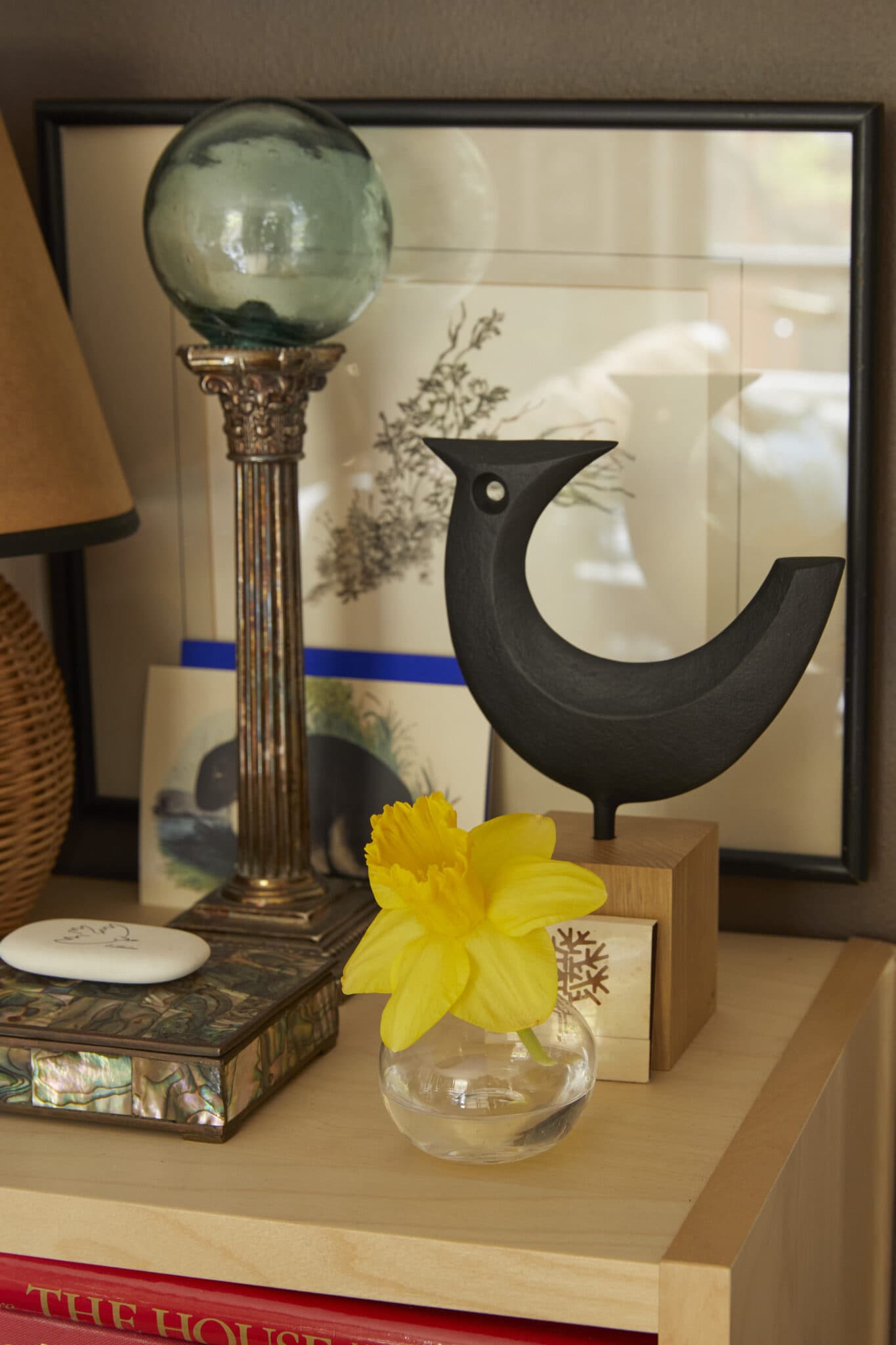
A small vignette on his bookshelf combines antiques from a 20th-century branch study from the Bill Blass estate auction, an english silver column candlestick, and a Japanese cast iron rooster from Nalata Nalata, and a tessellated mother of pearl box.
Melanie Acevedo -
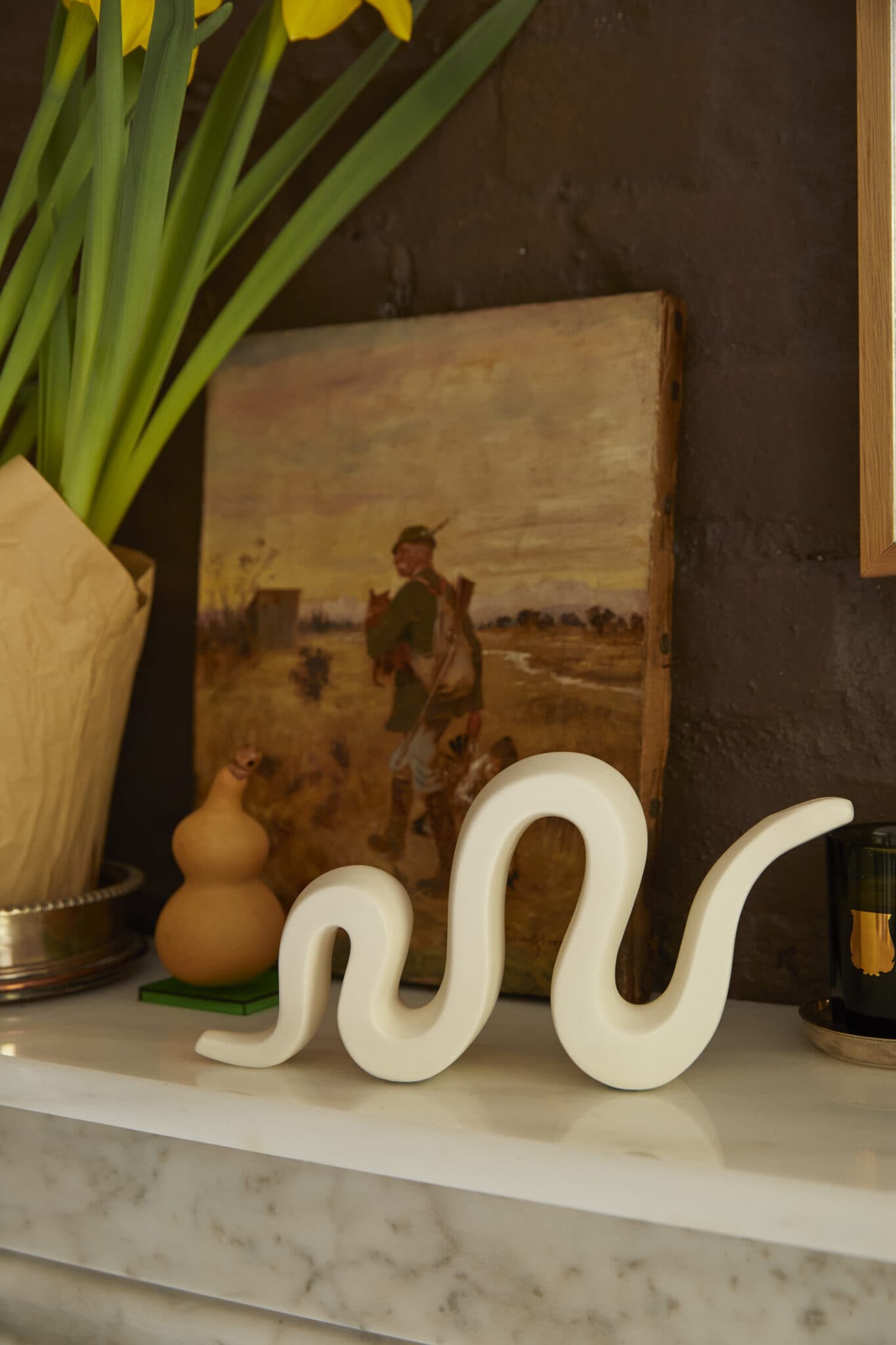
A vintage porcelain snake rests next to an antique gourd sake flask, both Japanese. The oil painting by Alfred Schmitzberger was bought at auction.
Melanie Acevedo
One gesture particularly underlines Neve’s understanding of how negative space can be transformative: There is no coffee table to bump your shin on, which makes the center of the room feel airy. Instead, there are exquisite side tables tucked near the arm of a slipper chair and sofa. “You need to constantly keep in mind how you really live,” he says. “It’s not just how things look; you have to make sure that they’re where you need them to be. And that’s not easy in such a small space.”
Since coming to New York—born and raised in Fort Worth, Texas, he began his career in advertising and social media management before convincing Miles Redd and David Kaihoi that he had the talent to work on interiors—Neve has become something of an auction buff. That’s how he finds most of his art and furnishings, save for the ivory two-seater sofa from ABC Home adorned with pillows of African mudcloth bought on Etsy and brown Prelle silk velvet, or the occasional piece sourced from Ikea or Urban Outfitters. As for art, he favors 19th-century architectural studies and works on paper that depict flora and fauna; his taste in furniture runs to compact, classical pieces with lines that suggest a covert modernity.
Never quite satisfied (or certain that he has maximized his minuscule dwelling’s potential), Neve moves things around constantly, repositioning a vintage Japanese snake sculpture, a Billy Baldwin slipper chair, a tray of silver Jefferson cups that were once in his parents’ home, or rehanging his numerous pieces of art. There are perhaps a hundred small works scattered around the apartment— “I think I may have reached some sort of limit,” Neve says, looking around—yet the walls don’t feel cluttered, thanks to his uncanny talent for gallery-style hanging. To maintain a sense of order, he relies on symmetry in miniature. The decorative marble mantel is flanked by matching swing-arm brass floor lamps, while a pair of antique majolica candlesticks sits atop an Ikea bookcase nearby.
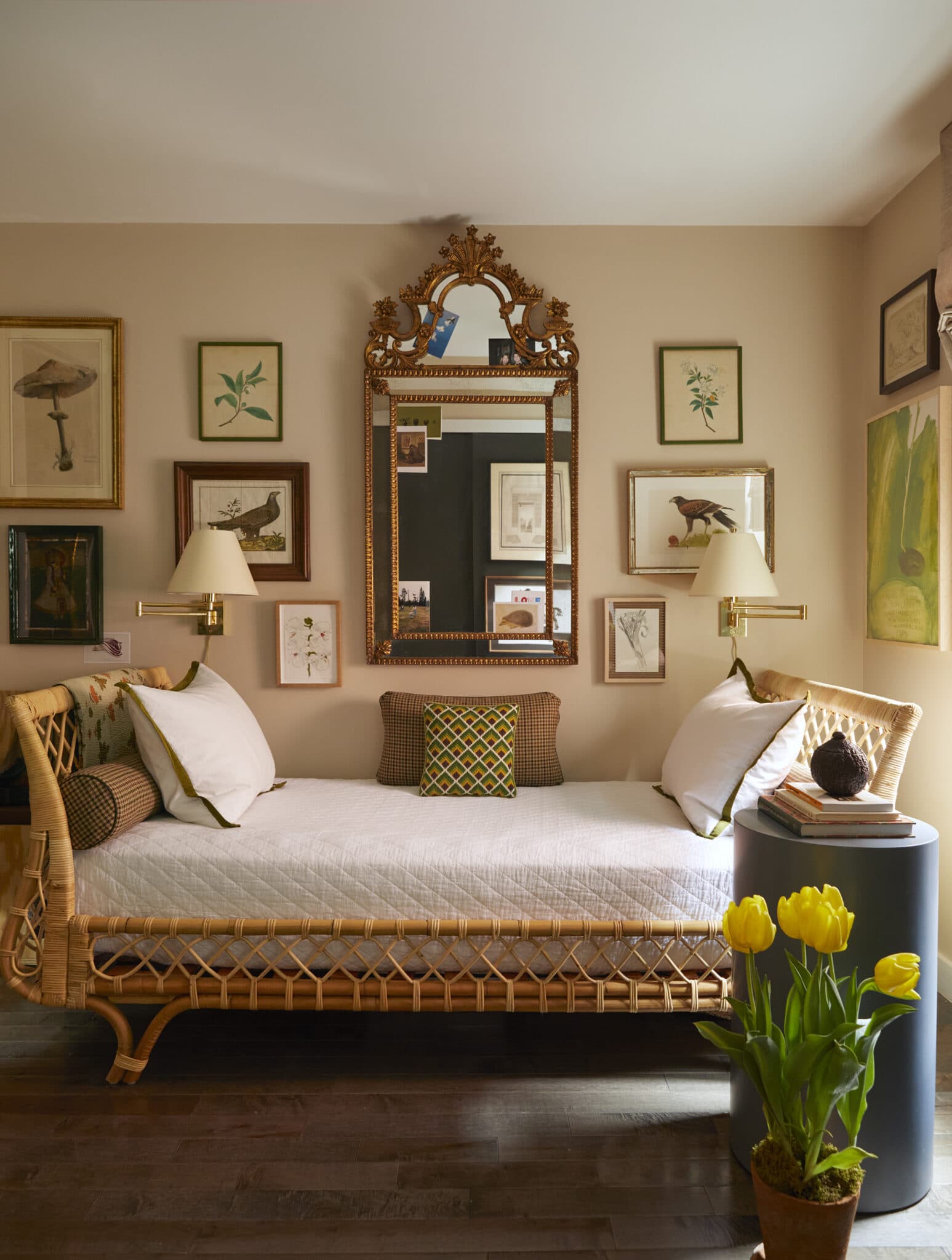
Rather than try to fit a standard bed in the narrow space, Neve opted for a rattan daybed by Serena & Lily. The Regency mirror is surrounded by small framed works, meticulously balanced in size, including a hand-colored lithograph of a hawk by the Texas artist Charles Beckendorf and a pencil-and-oil picture of an orchid by David Kaihoi, who is an artist as well as a principal at Redd Kaihoi. The walls are swathed in pink-tinged Bare Essence by Benjamin Moore.
Melanie AcevedoThe bedroom, painted in wispy pink-tinged beige, is small and narrow; ever-conscious of maintaining proper proportion, Neve sleeps on a natural colored bamboo-and-wicker daybed. Above is a French Regency giltwood mirror surrounded by small framed works, meticulously balanced in size. Between the two small windows, an 18th-century English architect’s desk stands in front of a tall inlaid Coromandel screen; a watercolor hangs from one panel. Even the sliding closet doors act as a place to display art, lately a 19th-century French School architectural study and a monoprint of a man on horseback by the contemporary artist David L. Smith. “You want there always to be something to attract your eye and make you think,” Neve says, “but at the same time, you want it to be calming. That’s a really hard balance—especially when you don’t have the luxury of stretching out.”
-
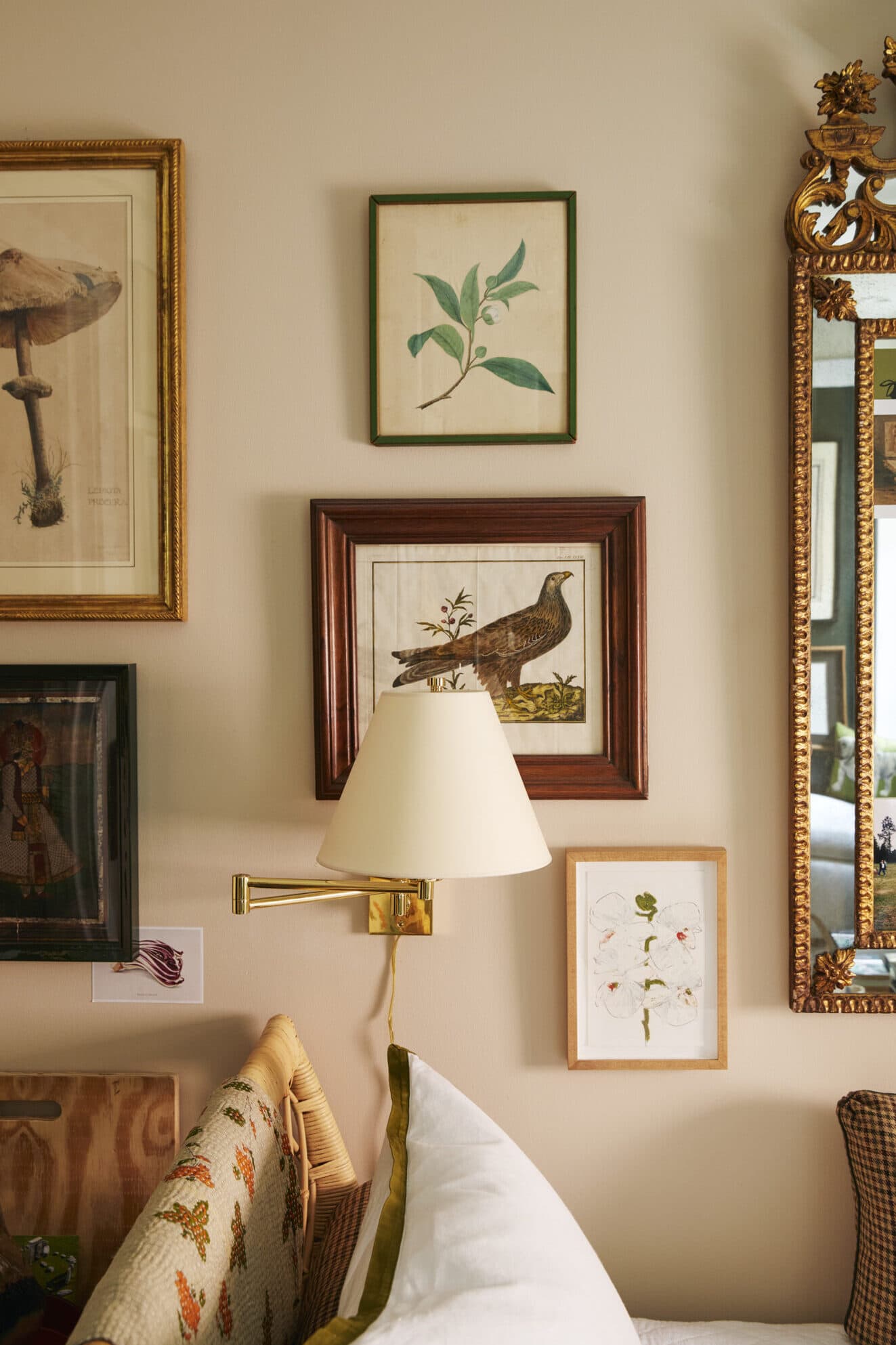
The walls of his bedroom are covered in fowl and flora prints. A plywood and leather slipper chair from Neal Beckstedt Studio peaks our from behind his daybed.
Melanie Acevedo -
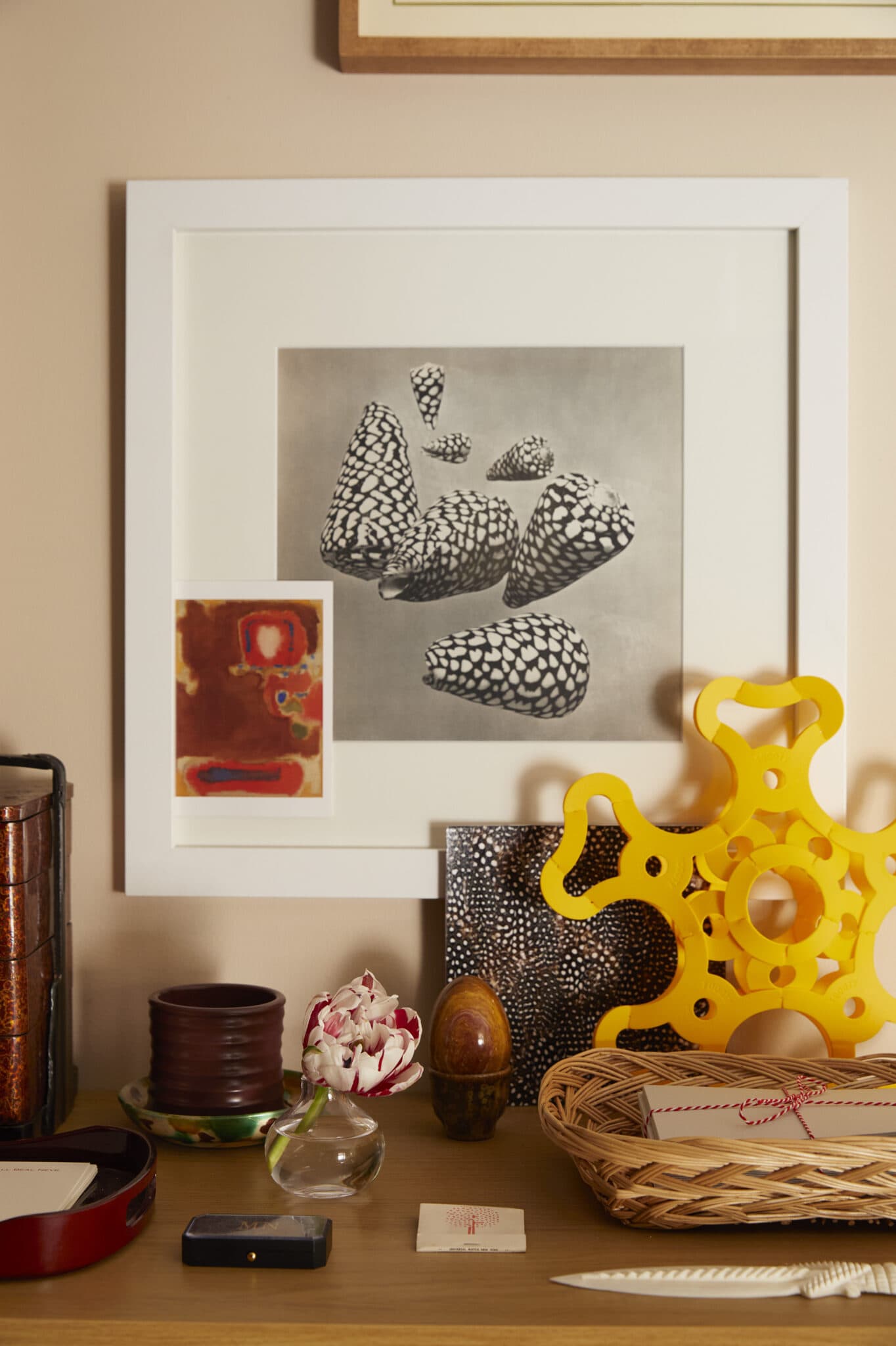
A collection of knickknacks—a vintage carved-bone crocodile letter opener, an antique hardstone egg, a colorful toy from the MoMA Design Store—adorns the top of a chest
Melanie Acevedo
THIS ARTICLE ORIGINALLY APPEARED IN VOLUME 10 OF FREDERIC MAGAZINE. CLICK HERE TO SUBSCRIBE!
